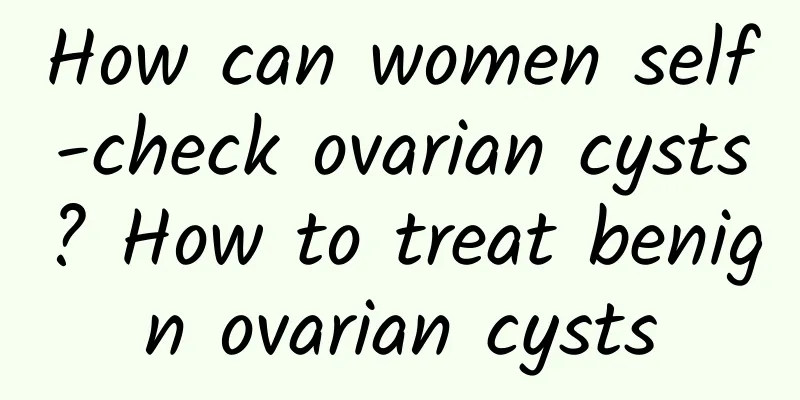What are the obvious symptoms of pelvic inflammatory disease?

|
Obvious symptoms of PID include lower abdominal pain, menstrual irregularities, and abnormal vaginal discharge. 1. Lower abdominal pain Lower abdominal pain is one of the most common symptoms of pelvic inflammatory disease. This pain is usually located in the middle or on both sides of the lower abdomen and may spread to the back and thighs. The degree of pain varies from person to person, and some people may feel mild discomfort while others may experience severe pain. The pain is usually worse during menstruation and may even affect daily activities. 2. Irregular menstruation Pelvic inflammatory disease may cause changes in the menstrual cycle, including irregular menstrual cycles, excessive or insufficient menstrual flow, and prolonged menstruation. Menstrual pain may also increase, affecting women's quality of life. If you find that your menstrual cycle has suddenly become irregular, or there have been significant changes in menstrual flow and duration, it is recommended to see a doctor as soon as possible. 3. Abnormal leucorrhea Abnormal vaginal discharge is also a clear symptom of PID. Women with PID may notice changes in the color, smell, and amount of vaginal discharge. The discharge may become cloudy, yellow, or have an odor, and may even be streaked with blood. If you notice unusual changes in your vaginal discharge, you should consult a doctor as soon as possible to determine if there is an infection or other problem. 4. Fever and chills Pelvic inflammatory disease can sometimes cause systemic symptoms, such as fever and chills. This usually indicates that the infection has spread and needs prompt treatment. If you have fever and chills along with lower abdominal pain, see a doctor right away, as this could be a sign of a serious infection. 5. Pain during sexual intercourse Pelvic inflammatory disease may also cause pain during intercourse, especially during deep penetration. This pain may affect the quality of your sex life and cause psychological distress and emotional problems. If you experience pain during sex, do not ignore it and seek medical help as soon as possible. 6. Difficulty urinating Some women with pelvic inflammatory disease may experience difficulty urinating or a frequent urge to urinate. This is because the inflammation may spread to the bladder or urethra, causing these symptoms. If you experience pain or discomfort when urinating, it is recommended to see a doctor as soon as possible. 7. Loss of appetite and fatigue Chronic pelvic inflammatory disease may cause loss of appetite and fatigue. This is because the body is in a state of inflammation for a long time, which consumes a lot of energy, causing you to feel tired and weak. If you find yourself constantly tired and have a loss of appetite, you should consider whether there is a chronic inflammatory problem. Suggestions and coping methods 1. Seek medical attention promptly If you suspect you have PID, it is important to see your doctor as soon as possible. Your doctor will perform a physical exam, ultrasound, and laboratory tests to confirm the diagnosis and prescribe an appropriate treatment plan. 2. Follow your treatment plan Once pelvic inflammatory disease is diagnosed, your doctor will usually prescribe antibiotics. It is important to follow your doctor's advice and take your medication on time to complete the entire course of treatment. Even if your symptoms improve, do not stop taking the medication early to avoid a recurrence of the disease. 3. Lifestyle Adjustment During treatment, maintaining a good lifestyle will help speed up recovery. Get plenty of rest, avoid strenuous exercise, maintain a balanced diet, and enhance immunity. At the same time, avoid sexual activity to prevent worsening the infection or infecting your partner. 4. Regular inspection Pelvic inflammatory disease is prone to recurrence, so regular gynecological examinations should be performed after treatment to ensure that the inflammation has completely subsided. If any discomfort or symptoms recur, seek medical attention in time to avoid worsening of the condition. By knowing the telltale signs of pelvic inflammatory disease and how to deal with it, you can better protect your health. If you have any concerns or discomfort, it is wise to seek professional medical help as soon as possible. |
<<: How to cure cervical erosion
>>: What causes pelvic effusion?
Recommend
What are the main causes of ectopic pregnancy?
What are the main causes of ectopic pregnancy? I ...
Does amenorrhea affect red blood cells?
Amenorrhea will have a certain impact on red bloo...
What are the early symptoms and examination methods of ovarian cysts?
The early symptoms of ovarian cysts are usually l...
What is a female ovarian cyst
We know that the ovaries are located in the lower...
Symptoms of cervicitis often occur
Cervicitis is a common gynecological inflammation...
What are the main symptoms of congenital absence of vagina?
Women with congenital absence of vagina are in gr...
Treatment of pelvic effusion
Treatment of pelvic effusion: Treatments for pelv...
Does ovarian cyst affect pregnancy? What are the main symptoms?
Will ovarian cysts affect pregnancy? What are the...
NG weight loss can easily lead to aging. 6 foods you must eat to lose weight and fight aging
After finally successfully getting rid of excess ...
Powerful fight against obesity! 3 exercises a day, lose 18kg quickly after giving birth
There are many pregnant mothers who gain nearly 2...
What are the symptoms of early uterine fibroids?
What are the symptoms of early uterine fibroids? ...
What are the symptoms of submucosal uterine fibroids?
Submucosal uterine fibroids often cause symptoms ...
What are the methods for preventing cervical hypertrophy?
The high incidence of cervical hypertrophy is com...
It’s easy to lose belly fat, just use these 3 exercises to show off your belly easily! Fitness coach: 4 big mistakes you should avoid making
As the weather continues to be hot, more people a...
What should menopausal women pay attention to?
There are many things to pay attention to during ...









